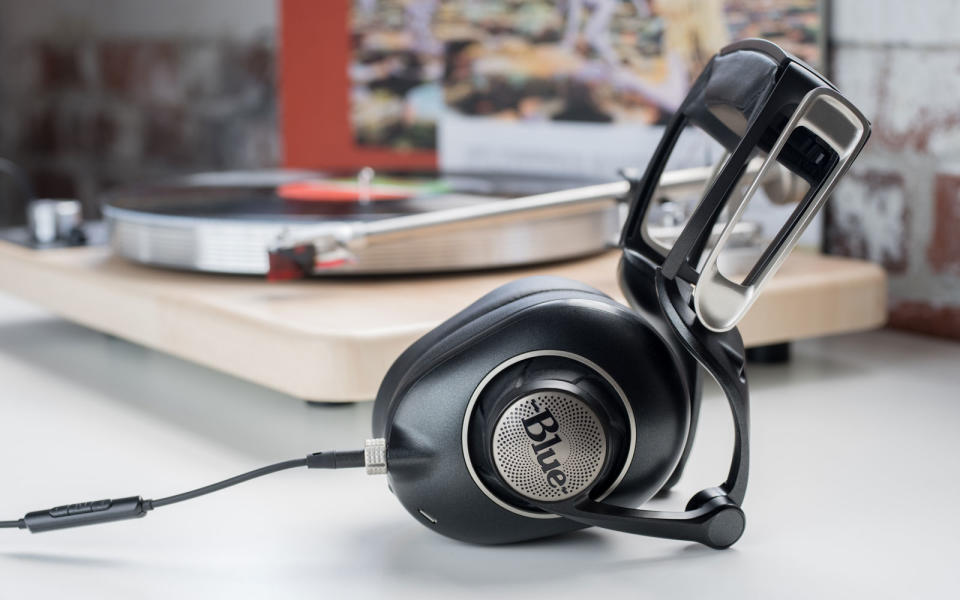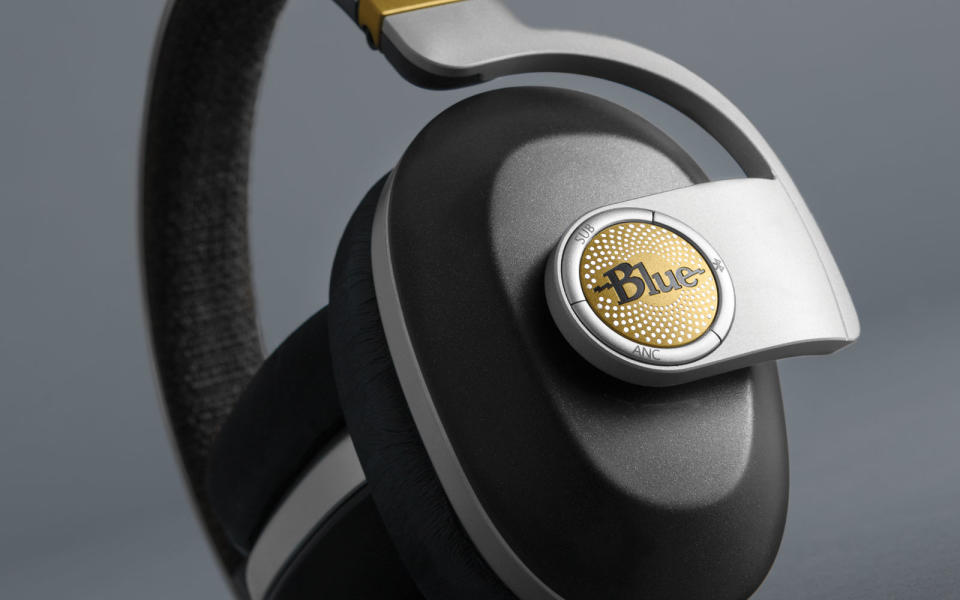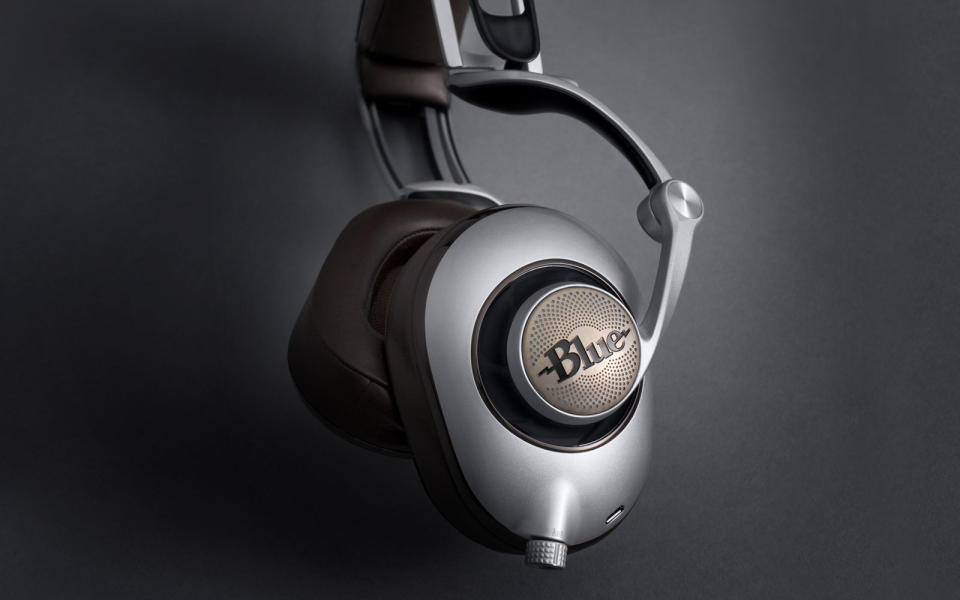How Blue used its microphone know-how to design headphones
CEO John Maier on audio, design and going mobile.

Blue's USB microphones have been a podcasting staple since the Snowball was introduced in the mid 2000s. Before then, the company had years of experience crafting professional-grade studio mics that became the go-to options for producers and engineers. It's a reputation that Blue maintains to this day. In 2014, the company decided to tackle headphones with Mo-Fi -- a wired model with a unique hinged design and a built-in audiophile-grade amplifier. Then, at CES this week, Blue took the wraps off three new models: the planar magnetic Ella; Mo-Fi's successor, Sadie; and the wireless Satellite. Soon after, I sat down with CEO John Maier to find out how the company put its microphone expertise to use in a range of headphones.
Unless you have a recording habit, the name Blue may be somewhat unfamiliar to you. The company was founded in the mid-'90s as an outfit that refurbished pro-level studio mics. Around 2000, it decided it was time to make its own products, so it introduced the $1,000 Bottle microphone that's still around today. In the years that followed, Blue continually moved toward more accessible, consumer-friendly products. It started with a more affordable pro mic, the Blueberry, before using a similar setup to what's in the 8 Ball condenser unit for the extremely popular $50 Snowball USB model.
How does a company that's focused on collecting sound decide to move into beaming it out to your ears? As Blue tells it, the transition was natural. "We definitely knew the world didn't need another headphone, especially after Beats had done an amazing job creating a whole new segment," Maier told Engadget. "Everyone else in the world tried to copy them and come into that market."
The company decided to stay on the bench for a while until it could develop something unique. "We knew that the technology is basically the same; it's just going in the opposite direction from an audio standpoint," Maier said. "We knew that we could offer some novel ideas, both in design and taking some of our pro audio know-how and bringing it to a larger audience." Maier said that as the quality of streaming music started to improve over what we all listened to in the age of the MP3, there was a need for new headphones that offered better sound to match.

Blue's Sadie headphones
"We said 'what if we offered an audiophile product that worked well on a mobile device?' and that's where we landed on our approach," Maier continued. He said the company started with a blank slate and focused first on the product design. Blue ended up with a unique hinged design that looks something similar to the suspension on a Formula 1 race car. It flexes in multiple places to better fit the user's head. I've tested those first cans, the Mo-Fi, and the design does offer a somewhat custom fit, sitting securely on your head to help improve the overall sound.
Maier explained that the main idea for developing Mo-Fi was getting that audiophile power amp inside of the headphone and give the user control over whether it's turned on and if they want to use bass boost. "It takes all of the pressure off of your mobile device so you can turn the volume down and let the headphone do the work," he said.
At first, Blue partnered with popular headphone amp company Fiio on the tech for Mo-Fi. Since that first model, Blue has been working on its own amplifier components and those debuted this week. "Now that we've had a few years of experience, we're actually developing our own amps," Maier said. "In fact, Ella has a power amp we think is an improvement over the original Mo-Fi amp."
It makes sense for Blue to begin making headphones, but there are challenges that the audio accessories create that don't pop up when you're making microphones. "One of the challenges we had was putting the power amp in that's more than just a chip," Maier explained. "It takes some juice and we had some early glitches with Mo-Fi where you couldn't listen and power it at the same time." The company worked those out, of course, achieving well over a full work day's worth of battery life for the wired headphones.

Satellite, Blue's first wireless headphones
As with most first-gen products, Blue learned some lessons from Mo-Fi, mostly in terms of overall design. Those headphones featured a tension control on the headband that allows the user to adjust how tight they fit. "We found out no one really cared about that, so it was a feature that we really didn't need, but we really wanted it in there," Maier admitted. He said that the company ultimately decided that the extra weight and cost gave them room to improve. There's also the fact that users were confusing it for a volume switch. Blue nixed the tension adjuster in Lola, further reducing heft and increasing comfort for those headphones that came out in 2015.
"We were so concerned about sound on the first go-round that we made sure the clamping pressure was solid," Maier continued. "That ended up being a negative for some folks because it felt like too much." He's right. The clamping pressure on the Mo-Fi was pretty intense. While a tight fit helps maintain sound quality, the headphones began to feel like they were pinching in on my head during long listening sessions.
Mo-Fi and Lola debuted in 2014 and 2015, respectively. This year Blue plans to ship all three of the new models, significantly expanding its headphone lineup in a short amount of time. "We knew that we were going to do a wired 'no compromises' first product and that was Mo-Fi before becoming Sadie, Ella and Lola," Maier said. "We also knew we were going to do a product for more of the true consumer applications -- someone who's traveling or wants to be more mobile." That more mobile option is the new wireless Satellite. Maier explained that even though headphone jacks are increasingly scarce, Blue wasn't worried about the products it had in the works.
"We had to stick to our strategy of introducing ourselves to the world as a headphone brand," Maier said. "We weren't going to be the first mover on some high technology stuff like a Lightning version." Maier noted that there are still a ton of devices that have the 3.5mm jack and Apple decided to include an adapter with the new iPhones, so Blue wasn't too stressed during the development process. Audiophiles are going to want a wired connection anyway. Plus, the company had a wireless option in the works as well, which certainly eased any remaining doubts.

Blue's Ella headphones
The new models include Ella, a high-end planar magnetic headphone with a built-in amp, and Sadie, an update to Mo-Fi. Then there's my personal favorite: Satellite. Blue's first wireless headphone has an all-new design that differs from the hinged form factor used on the other models. It keeps the on-board amp and adds in active noise cancellation (ANC) to keep the sound quality top notch. Unlike most noise-cancelling headphones, Satellite has dedicated drivers for both audio and the ANC so that the sound doesn't suffer from a lack of power. All of that translates to a depth of sound I don't know that I've ever experienced on a set of wireless headphones.
In terms of those wireless Satellite headphones, Blue was able to take all the lessons it learned from Mo-Fi, Sadie and Ella and apply them to a new model that didn't require a cord. The company naturally focused on the sound first, and once they were satisfied with that, they moved on to see what they could accomplish with noise cancellation and Bluetooth.
"The audiophile power amp was key to make sure we still offered the same audio quality," Maier said. "The next thing we wanted to do was see what noise cancelling would do. That's why we broke it off into two drivers." Blue says it's the first company to offer dedicated custom drivers for sound and noise cancellation individually in a wireless headphone that also packs a built-in amp. There was a lot of work that went into how the two sets of components interacted with each other inside the earcups. It was also important that Satellite features the latest version of Bluetooth to make sure the sound was as good as it possibly could be.
Blue's microphones obviously influenced its headphone line, but the reverse is true as well. There's an upcoming product that takes design cues from the headphones and offers an aesthetic blend of the two. "We're working on a product now that will probably come out later this year that some of the design elements we learned on the headphones we're actually bringing over to this mic," Maier divulged.
Looking ahead, Maier said Blue will continue to make the work of what it calls "the modern-day broadcaster" easier. Whether it's a gamer streaming over the internet or a podcaster at home, the company wants to make how they make content less of a chore. Blue has already debuted a number of products that work with mobile devices, the latest being the Raspberry mic that came out in 2016. Maier explained that Blue will also keep working on products that enhance mobility.
"The ability to be more untethered and more mobile is where we're going to go," he said.
Click here to catch up on the latest news from CES 2017.


















